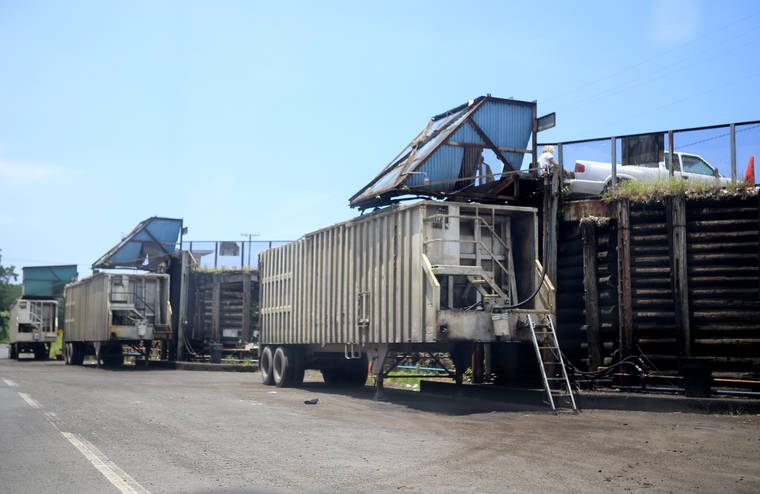Council asking county leaders to brainstorm new waste, energy ideas
HILO — With Hawaii Island’s zero waste and renewable energy programs only trudging along, it’s time for a major paradigm shift, county officials say.
But they emphasize that doesn’t automatically mean a waste-to-energy garbage incinerator, nor does it necessarily mean biomass burners or composting facilities. Instead, as far as Kohala Councilman Tim Richards is concerned, the sky is the limit.
Richards is sponsoring Resolution 301, to be heard at 2:30 p.m. Tuesday by the council’s Committee on Agriculture, Water, Energy and Environmental Management. The resolution urges the directors of the Department of Environmental Management and Research and Development to “develop a plan for a waste stream reduction technology for renewable and alternative energy generation.”
“The more I listened, the more I thought what we need to do is not have an idea but let the people use their heads and come up with some ideas. We need to think differently,” Richards said. “I don’t know what the answer is, but I wanted to empower their departments so they can work in a collaborative manner. … I’m going into this with no preconceived idea what needs to be done. Let’s evaluate all of this and let’s make a decision based on facts.”
County government has twice considered, and then dropped, plans for a waste-to-energy incinerator. Not only did those plans raise a public outcry, the projects also turned out not to be cost effective on an island generating a relatively small amount of garbage.
But 250,000 tons per year is still a big heap going into the county’s only landfill, and with recycling plans stymied by a lack of markets for most plastics, the county does need to take a look at alternatives, said Environmental Management Director Bill Kucharski. Even the recycling the county does divert from the landfill must be shipped thousands of miles away, costing fuel and polluting the environment.
The island lacks facilities to process most recycled products, leaving shipping as the only option.
“This is very, very, very, very preliminary. This is conceptual at this point,” Kucharski said. “This will be a major paradigm shift from what we are doing right now.”
The county has little control over its waste because it has no say about what kind of products and packaging enter the island. The HI-5 beverage container redemption process takes some glass and plastic bottles out of the waste stream. Hawaii Island’s 87% redemption rate is the highest in the state, but it’s not been increasing.
The county has banned local polystyrene sales, but there’s still plenty of polystyrene coming from off-island. Plastics, paper, glass and metal recycling continue with generally positive results, but the recent loss of markets for the stiffer No. 5 plastic has bitten into the recycling programs as well.
While no one has settled on a specific technology, there’s a lot of interest in some kind of gasification system that would create gas to convert to hydrogen for vehicles and batteries. Gasification models and anaerobic digesters can handle organic waste as well as plastics.
The Puuanahulu landfill currently emits a gas containing methane that now is being burned off. Collecting it could provide fuel for hydrogen vehicles, proponents say.
The county could, in theory, throw more waste into the landfill and wait a few years for the methane to be emitted and collected. But why stop there, officials ask. A gasification plant could convert waste more quickly under high heat.
Whatever the county decides to do, it must change current practices if it wants to succeed in its control of both waste management and clean energy, Richards and Kucharski said.
“It’s disingenuous to say we want to be sustainable, but we don’t want to change what we’re doing,” Kucharski said. “It’s going to be expensive, but sustainability on an island is rarely cheap.”



